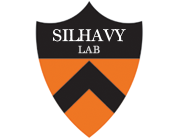The chaperone-assisted membrane release and folding pathway is sensed by two signal transduction systems
Type
The assembly of interactive protein subunits into extracellular structures, such as pilus fibers in the Enterobacteriaceae, is dependent on the activity of PapD-like periplasmic chaperones. The ability of PapD to undergo a beta zippering interaction with the hydrophobic C-terminus of pilus subunits facilitates their folding and release from the cytoplasmic membrane into the periplasm. In the absence of the chaperone, subunits remained tethered to the membrane and were driven off-pathway via non-productive interactions. These off-pathway reactions were detrimental to cell growth; wild-type growth was restored by co-expression of PapD. Subunit misfolding in the absence of PapD was sensed by two parallel pathways: the Cpx two-component signaling system and the sigma E modulatory pathway.

